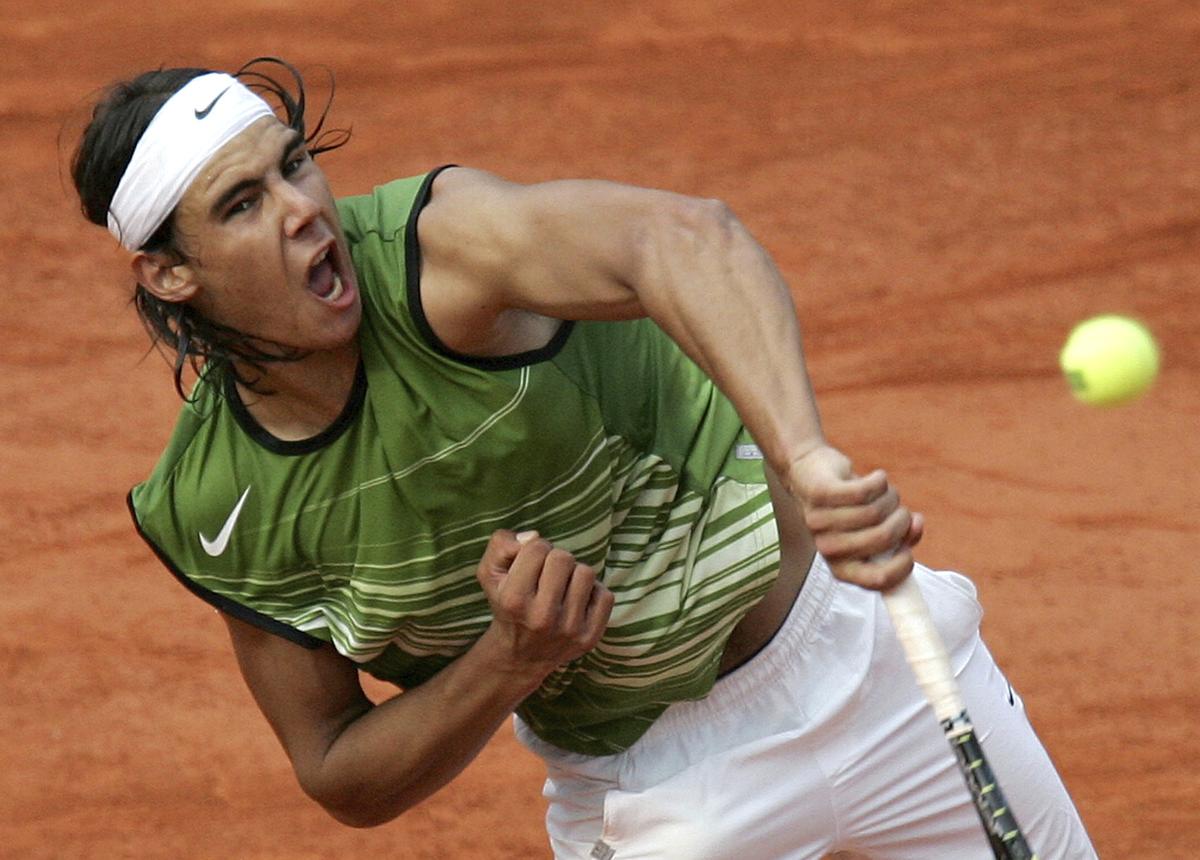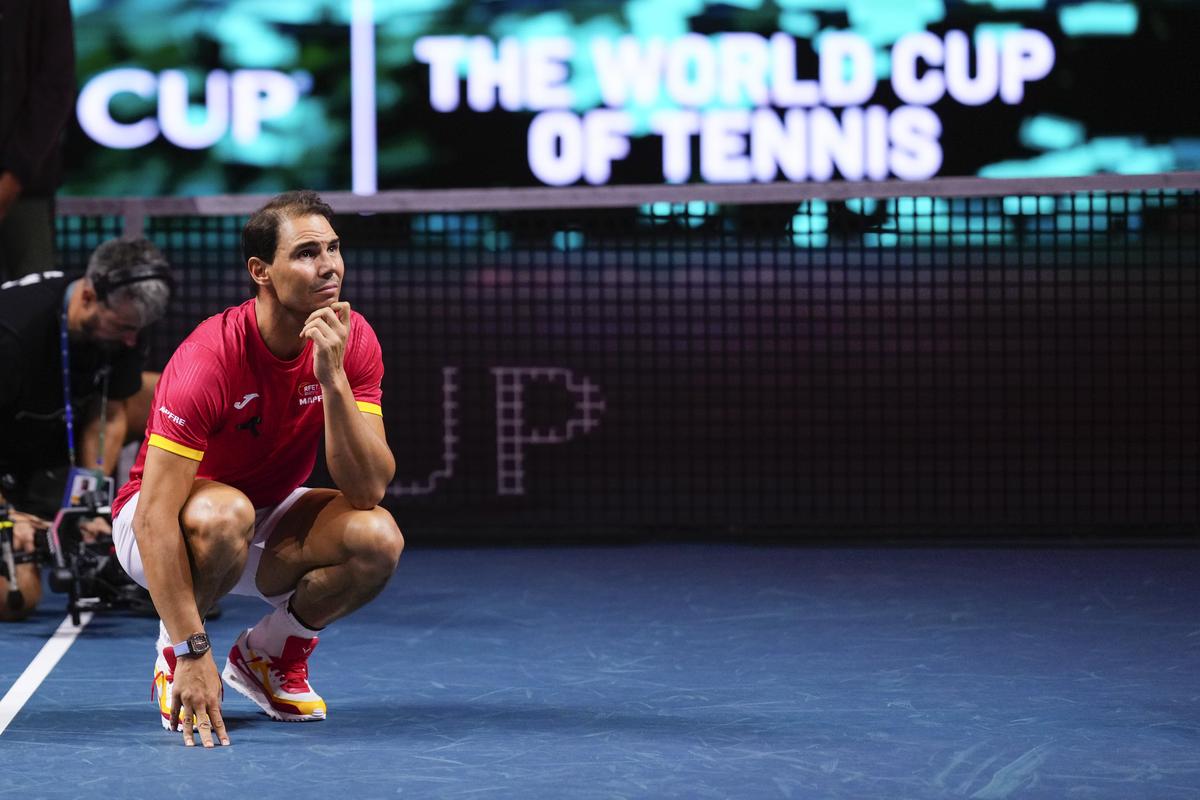Table of Contents
That Rafael Nadal could play for so long and so well was down to how he evolved.
| Photo Credit: Getty Images
Whenever a favourite sportsperson retires, there is a part of us that dies inside. It did when Sachin Tendulkar bid adieu and it did when Roger Federer waved goodbye. As Julian Barnes wrote in Levels of Life, “What is taken away is greater than the sum of what was there. This may not be mathematically possible; but it is emotionally possible.”

Rafael Nadal’s exit from competitive tennis is sure to leave a similar feeling. For two decades, the Spaniard – winner of 22 Majors, 92 Tour titles, a ludicrously high 14 French Opens, two Olympic Gold medals and five Davis Cups – did not just occupy the court but pervaded every inch of our collective minds. Now, this long-lasting love story will be a thing of the past.
However, when fans look at Nadal’s career in retrospect, its radiance in their memories would have swelled manifold. He first burst onto the scene as a 17-year-old in 2004 when Federer was the numero uno. While the Swiss’ ethereal style of play had mesmerised the world, Nadal, with his more down-to-earth rugged artistry, carved out a niche.

Rafael Nadal serves to Roger Federer during their semifinal match of the French Open in June, 2005
| Photo Credit:
AP
His performances on the red dirt (14 French Opens, 63 trophies in all), and a game built on supreme athleticism and topspin-heavy strokes may have stereotyped him as a warrior and a brutalist, but he was far from a one-surface master.
All-court excellence
Nadal was adept on the Wimbledon grass – two titles, three finals and three semifinals – where his razor-sharp instincts, magic hands and first-rate volleying shone through.
Hard courts did trouble him, with the unforgiving surface causing significant wear and tear, from his back to both his hips, knees and all the way down to his toes. There was a stretch in 2017-18 where he withdrew or retired from 11 of the 12 hard-court events he entered.
But that did not stop him from winning four U.S. Opens to become the most successful men’s player at Flushing Meadows in the 2010s. The vanquishing of Daniil Medvedev in the Australian Open final in 2022 with a miraculous come-from-behind victory, after having spent the prior months contemplating retirement because of a chronic foot injury, was arguably the Spaniard’s greatest.
Always a student
That Nadal could play for so long and so well was down to how he evolved. Locked in two era-defining rivalries with Federer and Novak Djokovic, he showed that there was always space to grow. He polished his serve, elevated the forehand and ensured that the backhand acquired point-ending ability.

Rafael Nadal during a tribute after playing his last match as a professional tennis player in the Davis Cup quarterfinals at the Martin Carpena Sports Hall in Malaga, southern Spain, on November 20, 2024.
| Photo Credit:
AP
All of which resulted in 912 consecutive weeks in the top-10, 23 wins over World No. 1s, 17 years between his first Major and last – each a record. Along with Ken Rosewall and Pete Sampras, Nadal remains the only male to have won Slams in his teens, 20s and 30s. He got better with elapsed time.
A wholesome package
But Nadal was more than just a tennis player. He was a racquet-wielding philosopher who valued effort over outcome, normalised self-doubt and nervousness, and relished pain. He had a polite word for everyone, threw no tantrums and didn’t break a single racquet in anger.
Human memory, though, is a trickster. It hides the past and exaggerates the recent, like Nadal’s struggles in the last two years. But when the clouds clear and the dust settles, light will only shine on his many incredible highs. It is his invincible spirit that will long endure.
Published – November 20, 2024 09:24 am IST

